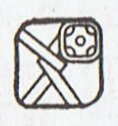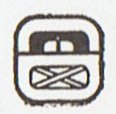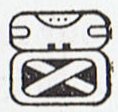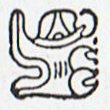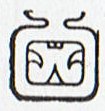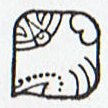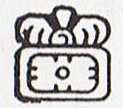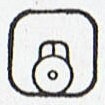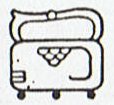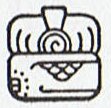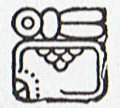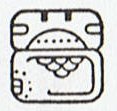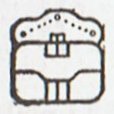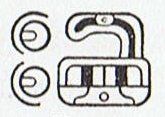In the E text there are 24 glyphs of this type, which I once commented on at Eb2-14:
The 10th of them has a little dot in front (which I did not pay any attention to at the time). This was the place where Metoro began to reverse his words (te henua - te kiore). 214 looks quite similar to 314 and perhaps the number refers to where the tresses of Pachamama divides 400. Perhaps 214 is referring to κ Virginis (185 days later than Alamak at the heel of Andromeda):
If the front side of the year stretched from Alamak to κ Virginis, then the back side could come with Syrma, where the Arabs saw Al Ghafr (the Cover). Father Light (Jupiter) has a cycle which stretches for 399 nights. Not counting until day number 1 has been completed in full the position of Cb1-6 will be at day 398, but if we should count also March 21 it will be at day 399. A 'black cloth' may have covered the earth after the death of Jupiter. He was from then on at the back side. According to the E text it could mean he would be absent until the 24th period, where a shark (mago) suddenly takes the position of kiore:
On side a of the G text there are 31 glyphs of this type, although with an added 'growing maro' sign in front, the last of them as glyph number 180 and only 6 days before Antares:
And then there is an extra special one at Gb8-2:
In the very extraordinary Gb7-30 someone evidently has been butchered. The position could correspond to that at Cb1-6, when Arcturus was visible close to the Full Moon. The first of the regular 31 glyphs on side a was at July 27 (according to a heliacal reading of the text), and 72 * 7 = 504 is the same number as that for manu kake in Eb5-29 (where 52 * 9 = 468).
If the order between day number (dd), month number (mm), and year number (yyyy) was regarded as dd-mm-yyyy, then July 22 would become 22/7 which alludes to π. Manu kake at Ga3-1 could then mean the 1st day after the end of half a cycle. Al Tarf means the end. And similarly could manu kake in Eb5-29 stand after the end of half a cycle because 178 = 6 * 29½ + 1. Perhaps the time from high summer (north of the equator) to Antares was when the rain clouds covered the Sun, his time for producing offspring. After that not much may have remained of the Ruler, he could have been completely exhausted, with only his 'meat' (Mac) and 'skeleton ribs' (Kankin) remaining:
15 * 20 = 300 days from the beginning of the year the 'beak' of the 'great bird' closed (Moan). The bird in Cb1-11 was at the nakshatra day October 27 = day 300. In the times of Al Sharatain this was 27 days earlier, viz. at day 273 ('September 30). | |||||||||||||||||||||||||||||||||||||||||||||||||||||||||||||||||||||||||||||||||||||||||||||||||||||||||||||||||||||||||||||||||||||||||||||||||||||||||||||||||||||||||||||||||||||||||||||||||||||||||||||||||||||||||||||||||||||||||||||||||||||||||||||||||||||||||||||||||||||||||||||||||||||||||||||||||||||||||||||||||||||||||||||||||||||||||||||||||||||||||||||||||









































